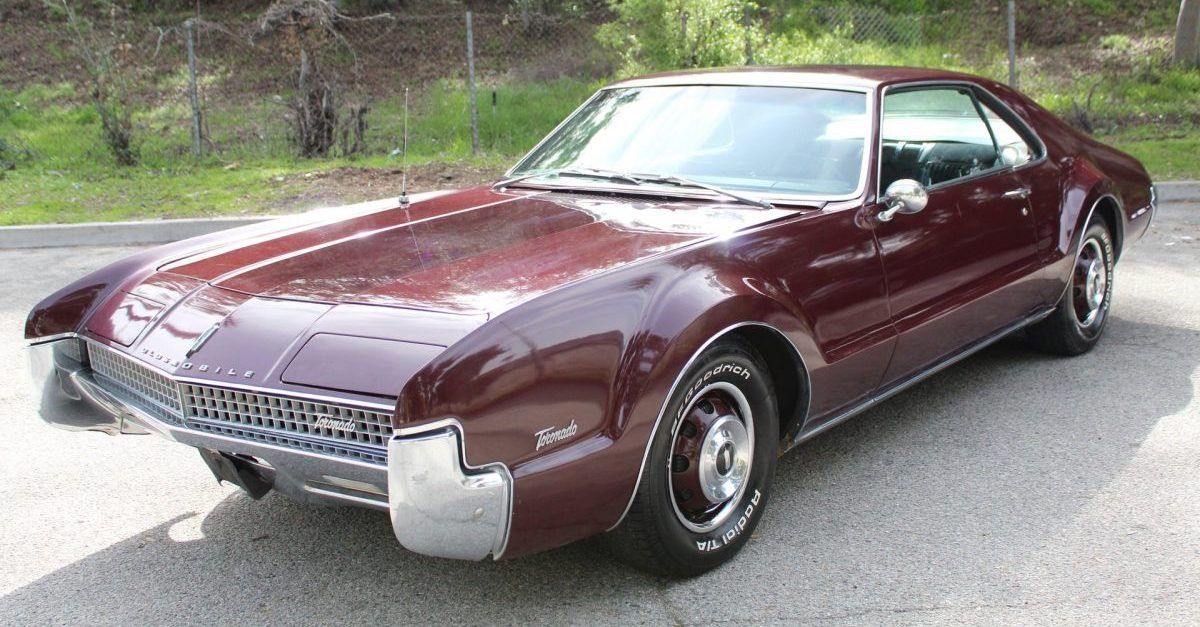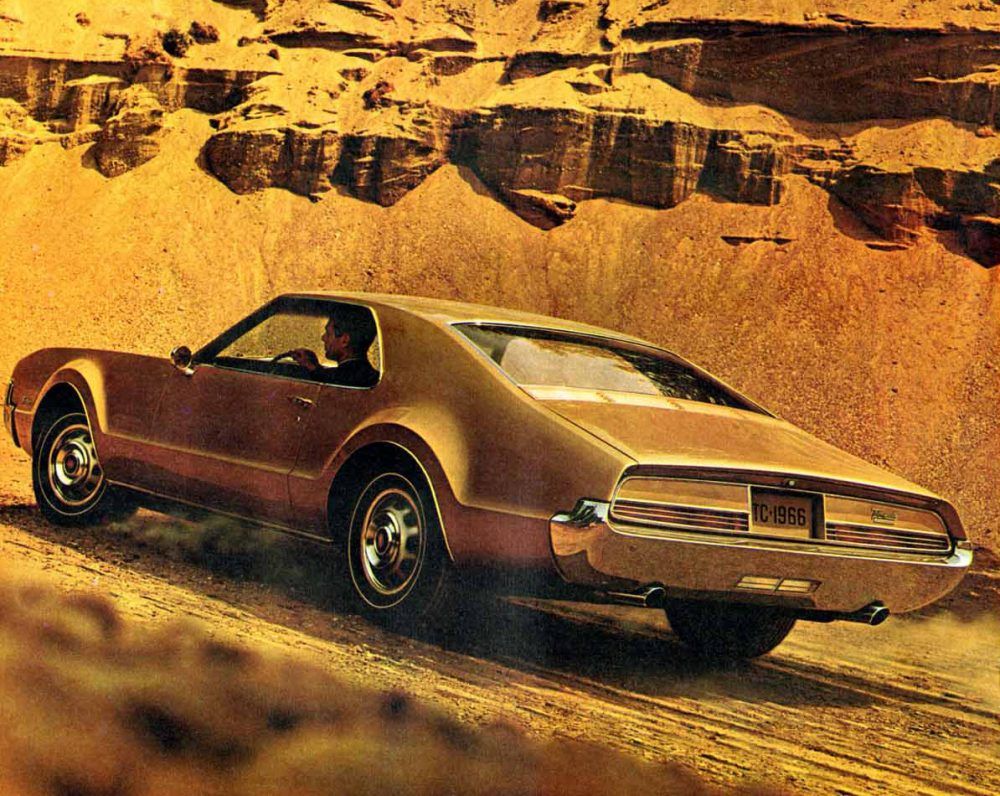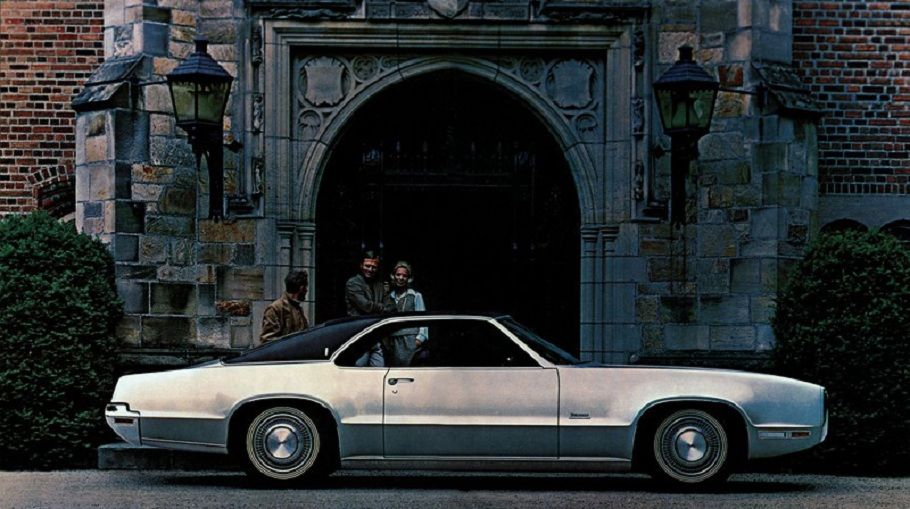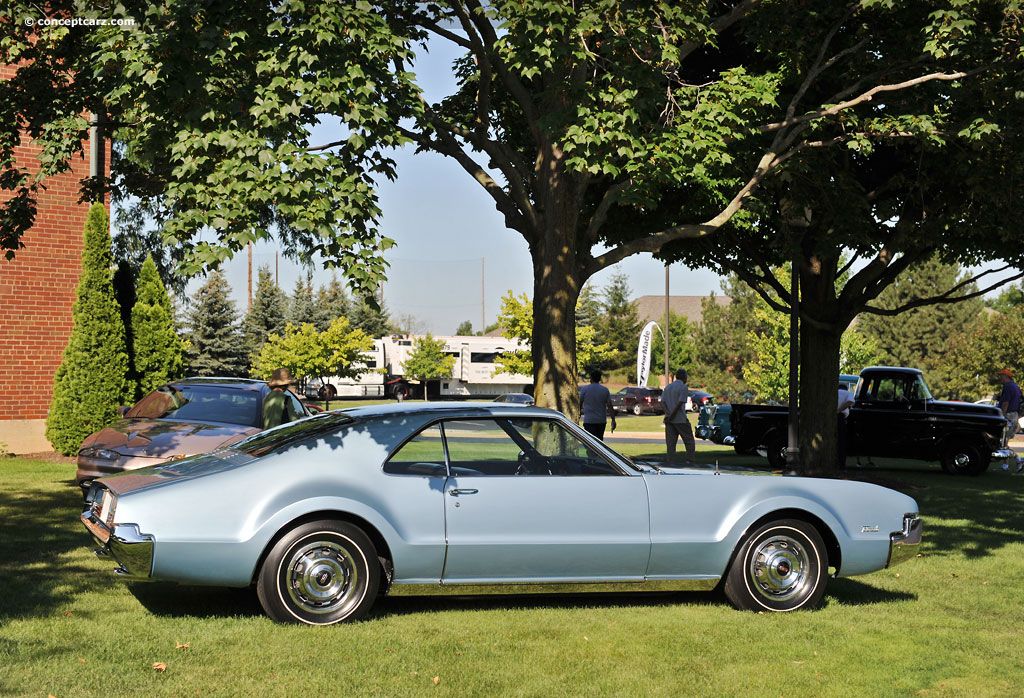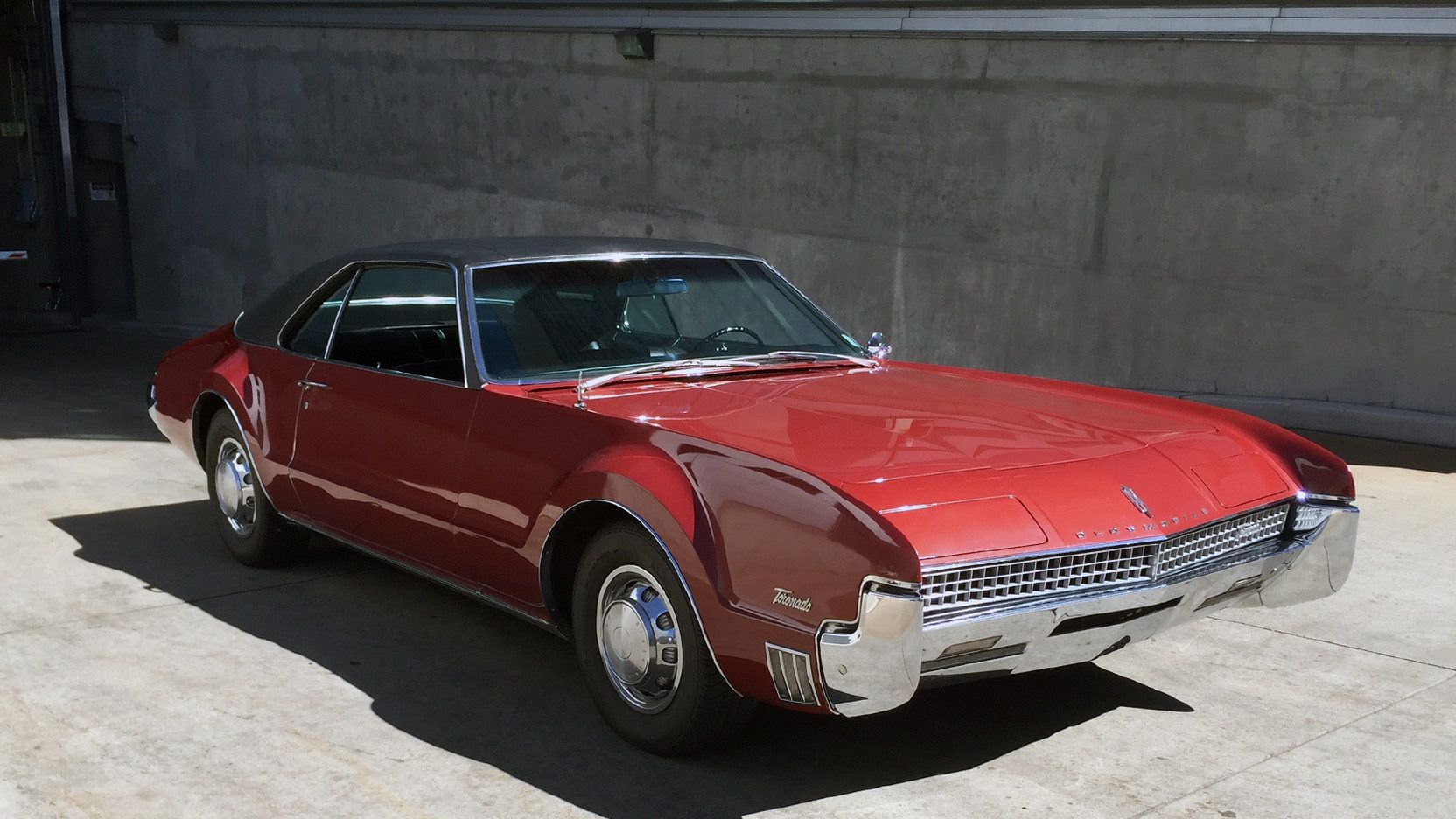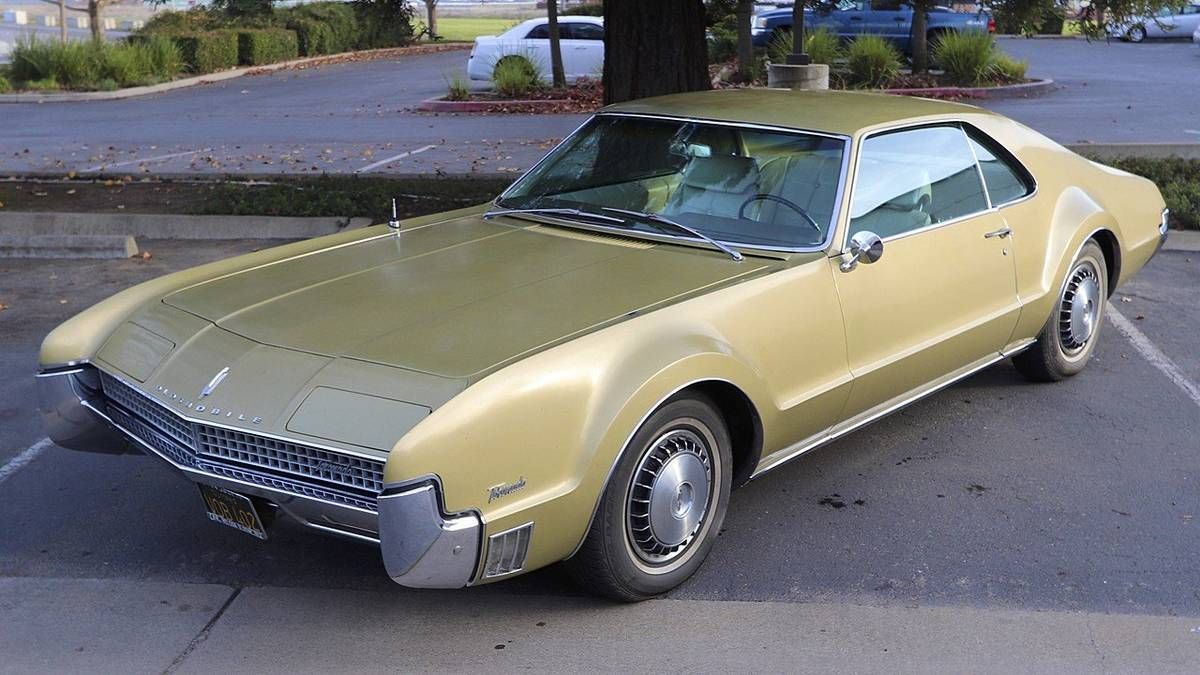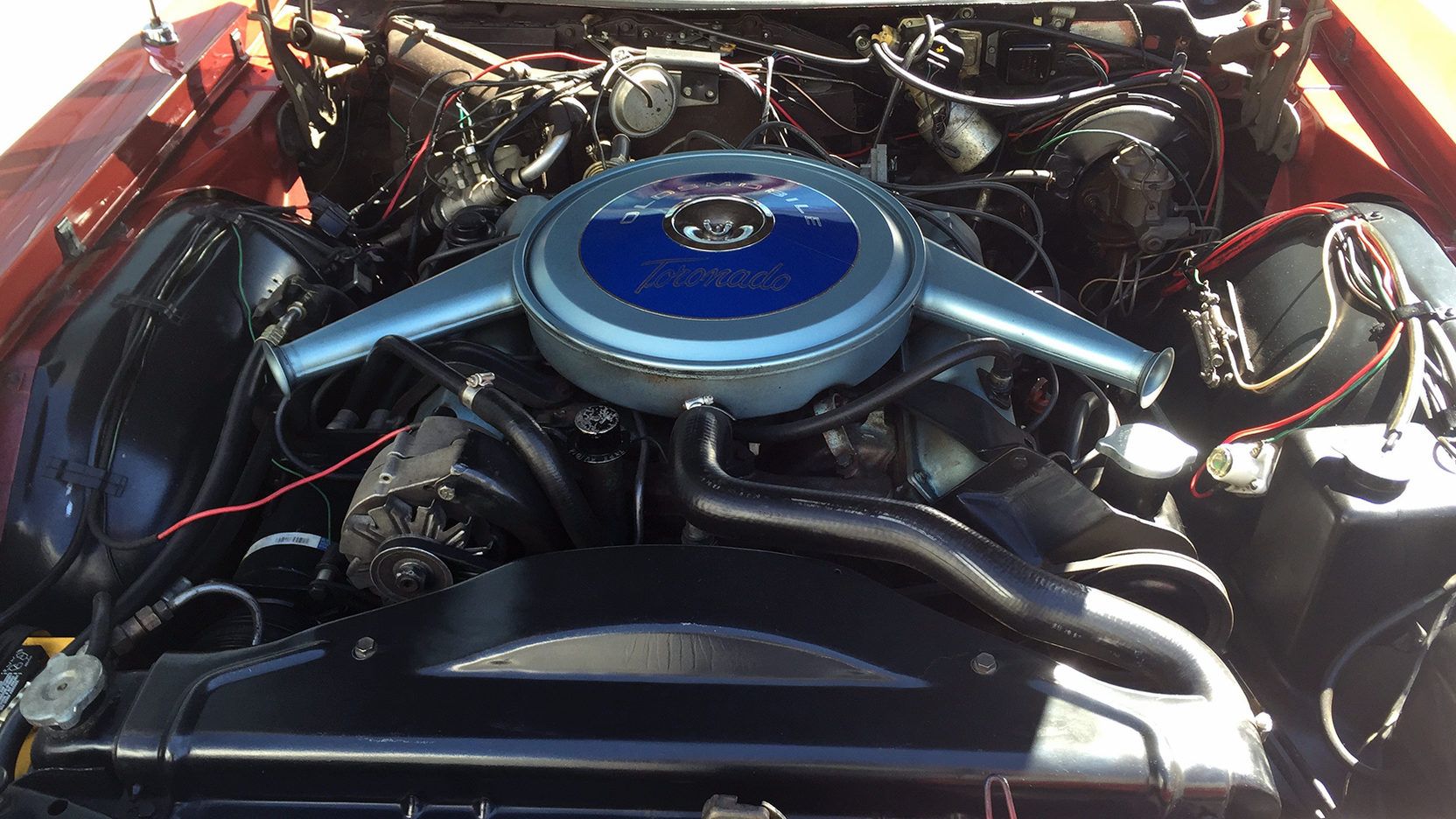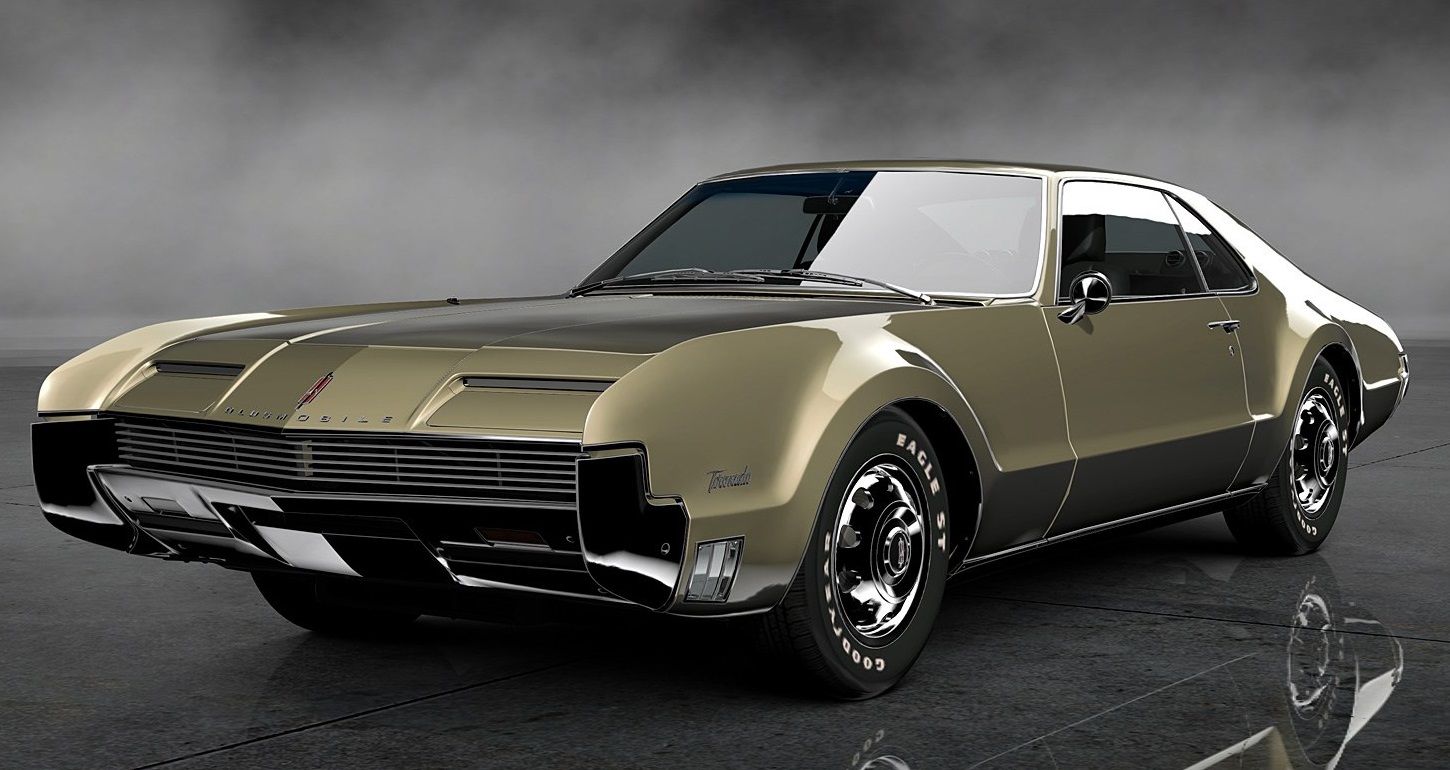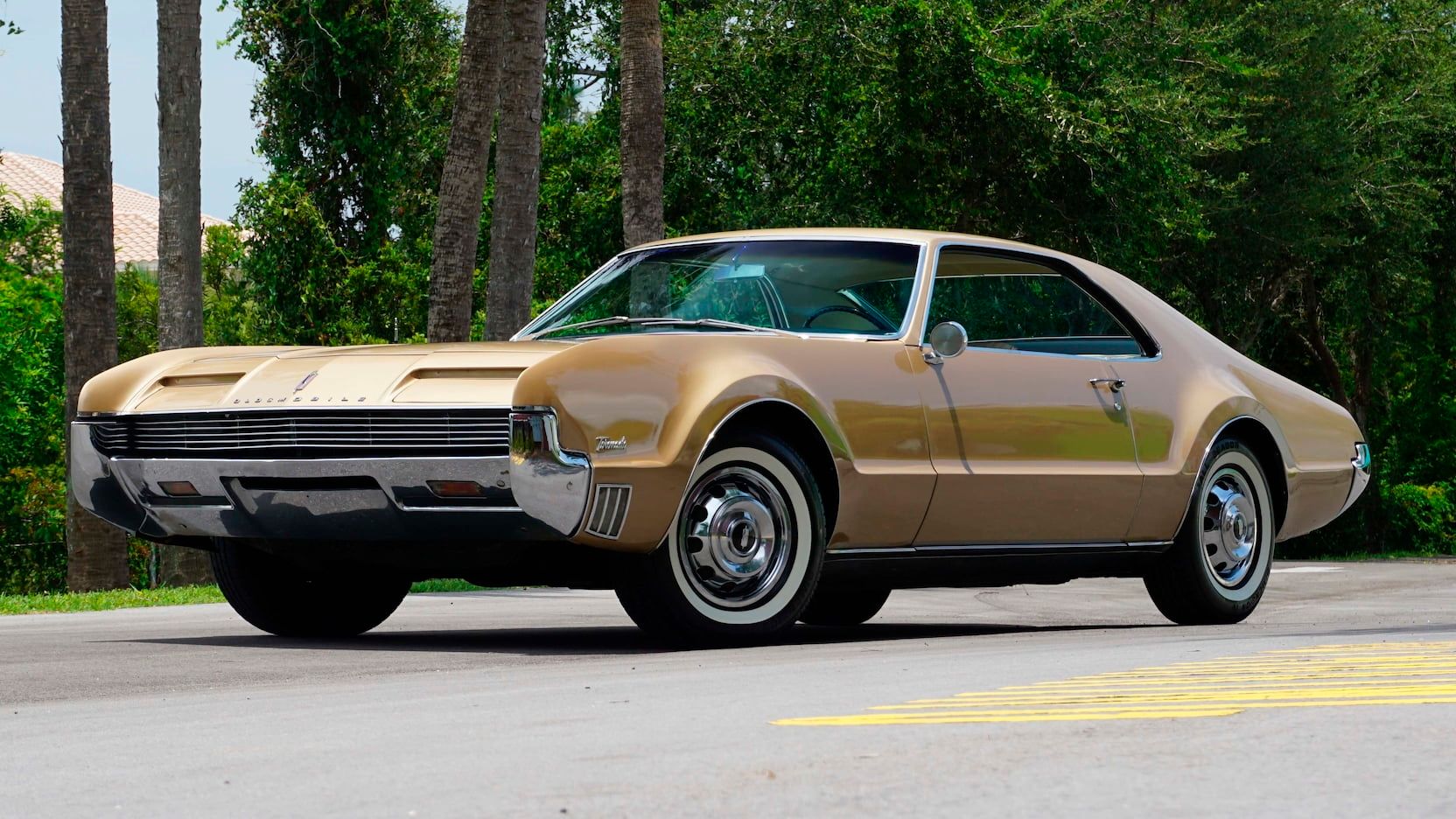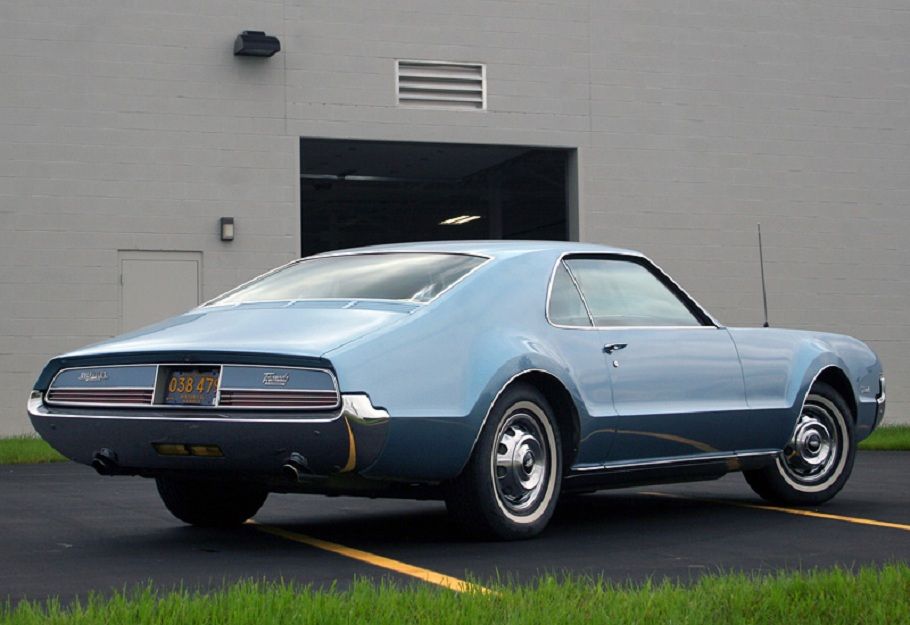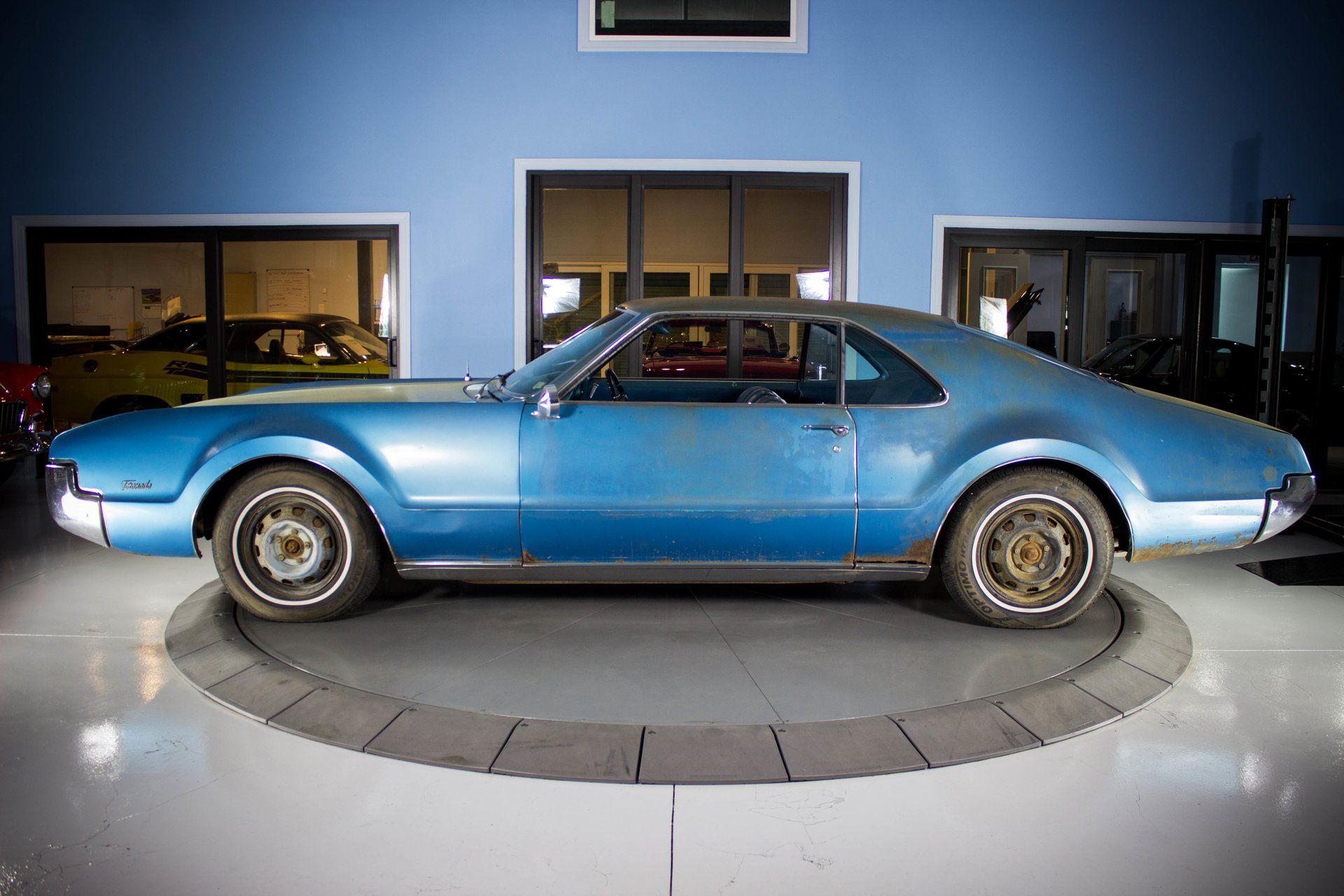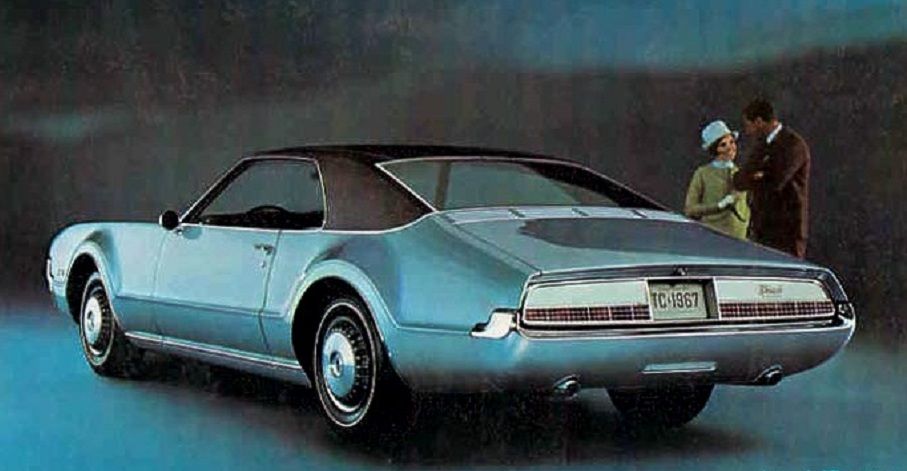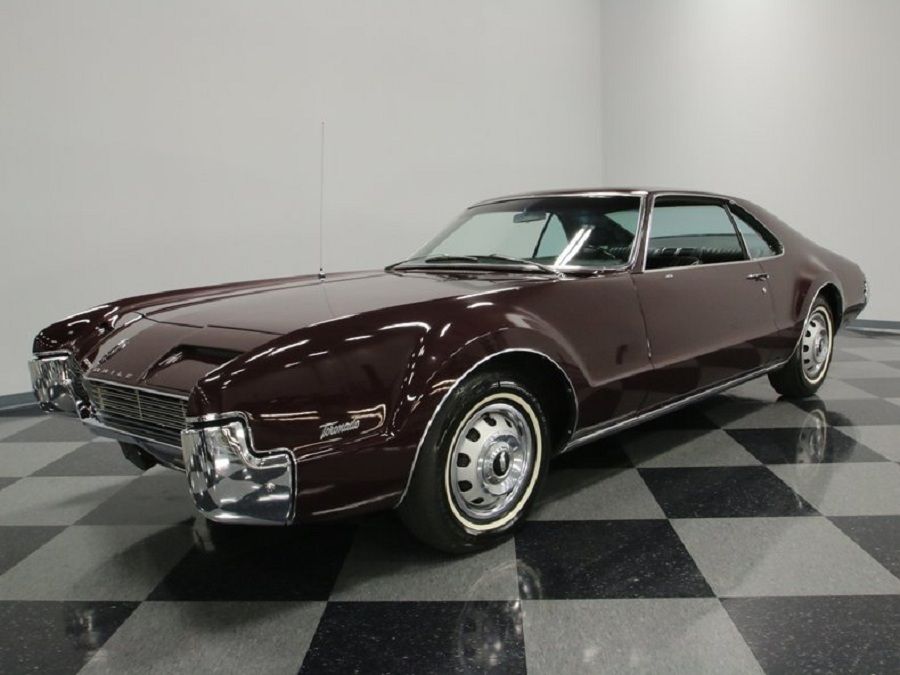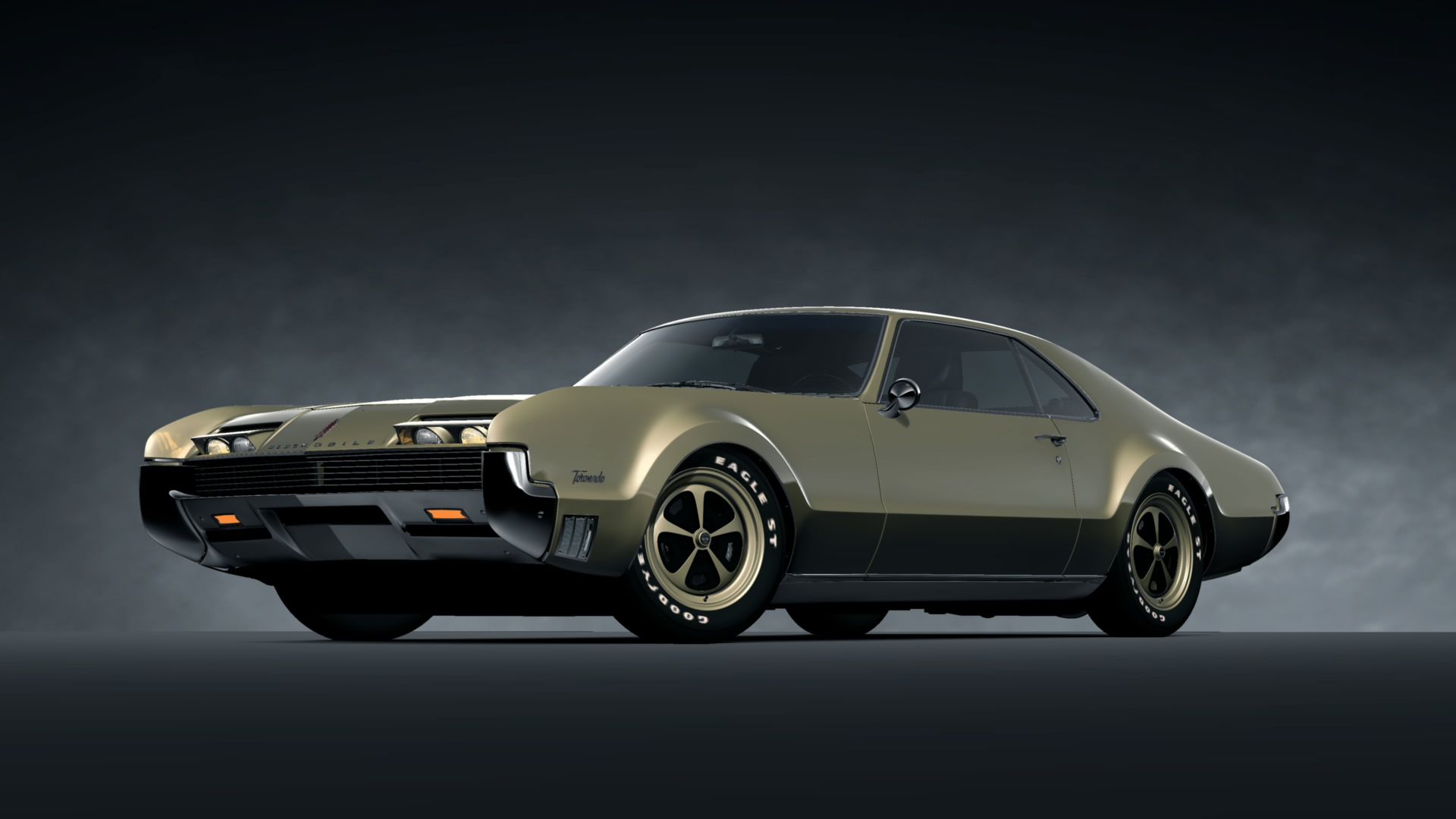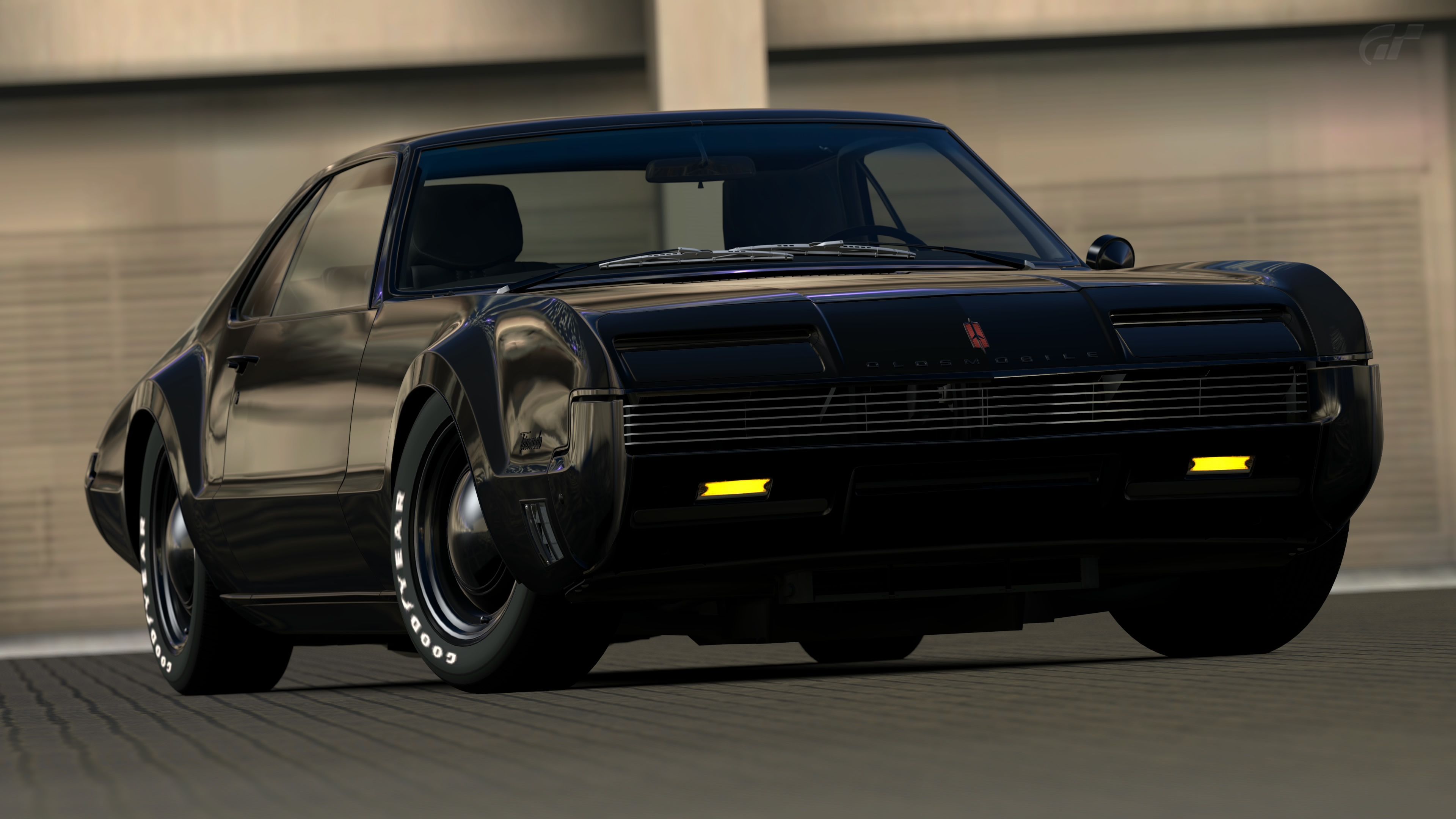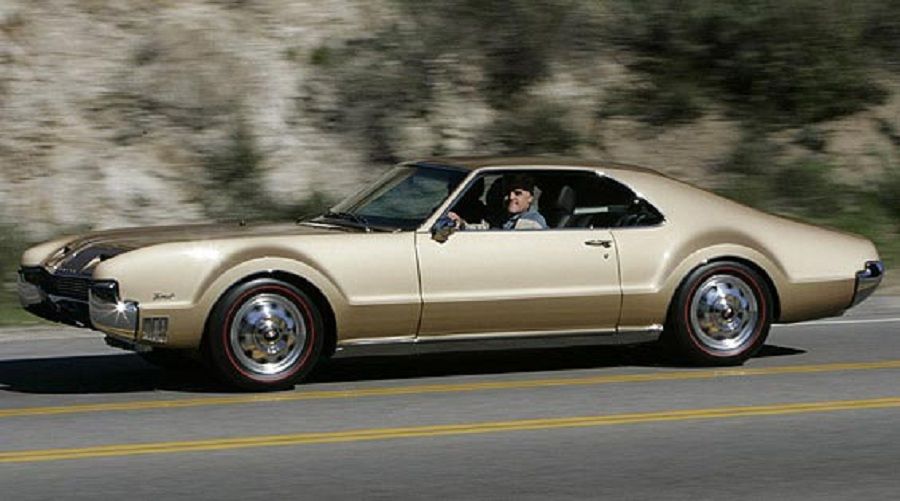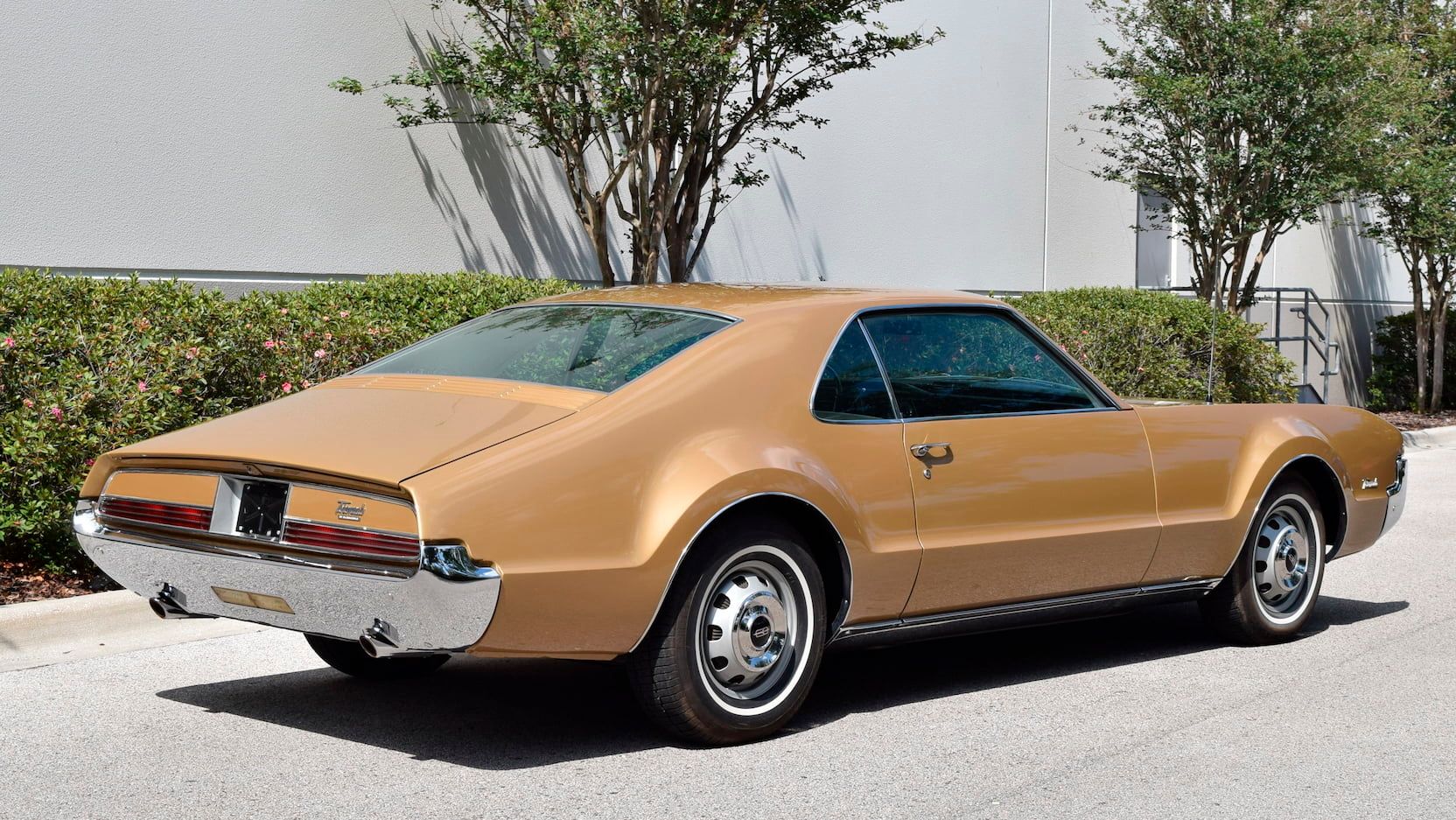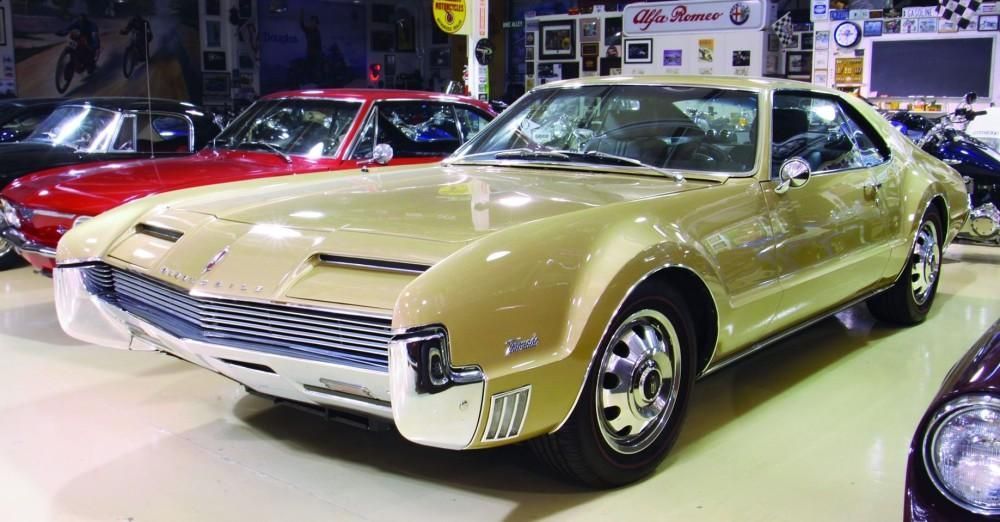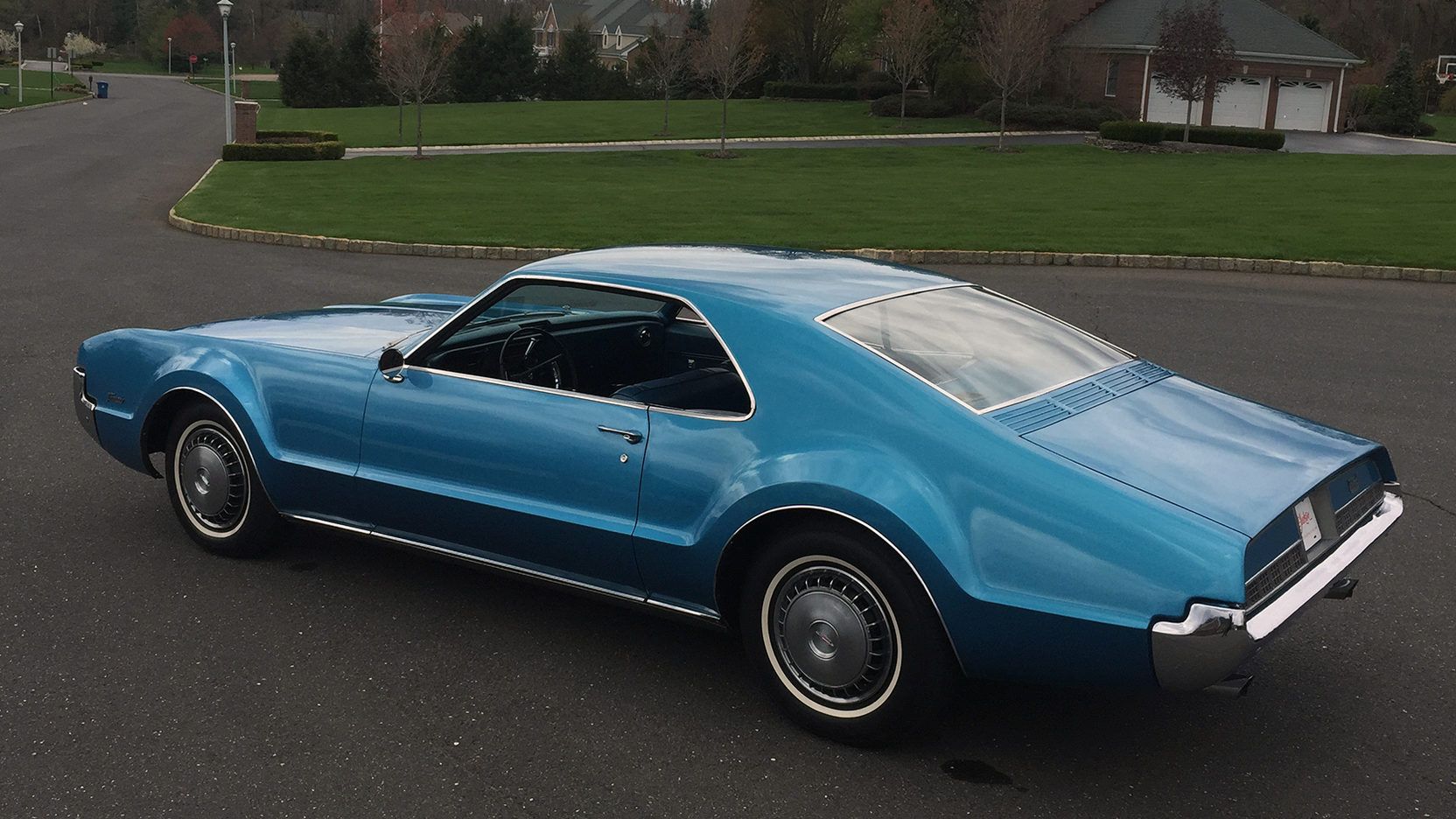A front-wheel driven Oldsmobile was seen by the General Motors executives as just the perfect ride that could share the class of personal luxury cars with the widely popular Riviera as well as the Thunderbird for the 1966 model year. They were right, as the Oldsmobile Toronado was an instant hit, providing owners with great value for money during its era – and remaining highly desirable even till date.
Although it’s quite hard to improve on a perfectly built car, the 1967 Oldsmobile Toronado, being the second year model of the brand, had some remarkable upgrades. These, as well as other innovative features and perfectly engineered components adopted from the first model, make the 1967 Oldsmobile Toronado a highly coveted personal luxury classic car.
10 Origin
The 1967 Toronado’s design wasn’t intended for production – as it originated from David North’s (Oldsmobile stylist) 1962 private painting of a compact/personal car called the “Flame Red Car.” However, Oldsmobile got the permission to build its version of a personal car for the 1966 model year, hence, North’s design got the nod.
Notably, the development also coincided with the completion of John Beltz’s front-wheel drive, and it was also integrated into the design.
9 First Gen
The Toronado was produced from 1966 to 1970 for the first-generation models of the brand. Being the maiden generation, it also represented the purest form of the Toronado marque, exuding great innovation and uniqueness characteristic of the widely adopted personal luxury car.
Before its release, Riviera and Thunderbird had dominated the personal car class. Therefore, the 1967 model of the iconic car is the second release of the first generation Toronado cars.
8 Platform
The GM E platform was introduced in 1963 for the rear-wheel-drive Buick Riviera. Being a personal luxury car as well, the Oldsmobile Toronado adopted this platform for a major part of the car’s production history including the 1967 model year.
However, the Oldsmobile Toronado was produced with a transaxle version of GM’s Turbo-Hydramatic transmission effectively reintroducing front-wheel-drive automobile to the U.S. market. Notably, the front-wheel-drive Cadillac Eldorado also featured the E platform in 1967.
7 Powertrain
The engine remained unchanged for the 1967 model of the Toronado from what it was at launch. It featured a 7-liter overhead valve (OVH) V8 engine rated at 385 horsepower with a torque of 480 lb-ft at 3200 rpm. Notably, this engine is mated to a 3-speed automatic, Turbo-Hydramatic 425 transmission.
The engine features an improved Quadrajet Carburetor for maximum economy. Also, the 1967 model shares the same gear ratio of 3.21:1 as the 1966 model.
6 Performance
The 1967 Toronado had a fairly unaltered performance from what was on offer from the preceding model. Hence, the car could accelerate from rest to 60 mph in 7.5 seconds and a quarter-mile in 16.4 seconds, at 93 mph.
Also, from the performance test data published by the car’s testers, the Toronado has a maximum speed of 135 mph. Notably, the Toronado had good handling reports and is said to be incapable of terminal oversteer.
5 Brakes
There weren’t too many weak links on the Toronado during its launch, however, the car’s brakes weren’t among its strongest features. The 1966 Toronado was fitted with drum brakes which are operated using hydraulics.
This impacted negatively on the ride quality as the car’s heavyweight leads to overheating of the brake drums after a few heavy braking stops. Hence, to mitigate the problem, in the 1967 model, Oldsmobile provided vented front disc brakes as an option.
4 Tires
Although they were few, however, Oldsmobile featured some new components on the 1967 Toronado as an improvement on the 1966 model. Part of these changes were mechanical, as the 1967 Toronado was given new-style driveshaft joints to improve the drive quality as well as upgraded spring bushings in the rear shock absorber for a less turbulent ride.
Notably, the 1967 Toronado also got radial tires as its predecessor was famed for devouring its front tires.
3 Dimension & Weight
The first generation Toronado had a uniform wheelbase of 119 inches. However, with added length from the hood, trunk, and overhangs, the 1967 model has an overall length of 211 inches as well as a height of 52.8 inches and a width of 78.5 inches.
Notably, the 1967 Toronado has a shipping weight of 4,311 lb and a curb weight of 4,496 lb. Furthermore, 60.3% of the 1967 Toronado’s weight is located in front, while 39.7% is found at the rear.
2 Pricing
When it was released on October 14, 1965, the Toronado’s starting price was $4,585. It was built in two versions of standard and deluxe and some of its base equipment includes two-speed windshield wipers, front and rear seatbelts, as well as an electric clock among others.
However, for the 1967 model, the base price rose to $4,674 accounting for some of its performance upgrades features such as the addition of the Climatic Combustion Control system and Delco High-Energy ignition.
1 Sales
The Oldsmobile Toronado’s 1966 model year represents the best sales year for the brand in its first generation. Starting with over 40,000 unit sales in 1966, it took the brand a heavily revised styling into a more traditional luxury car to put the sales trajectory on an upward scale.
Notably, the annual facelifts of the first-generation Toronado didn’t help much as the 1967 model recorded a drop in sales by nearly half, to 22,062.

